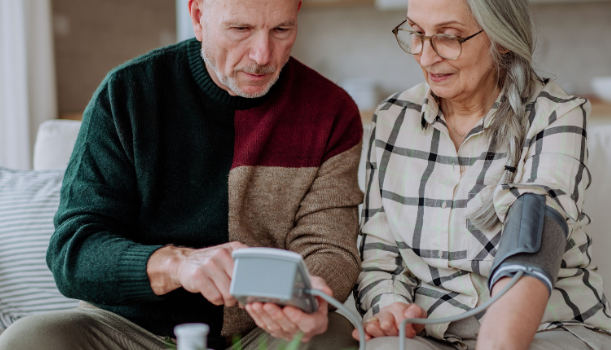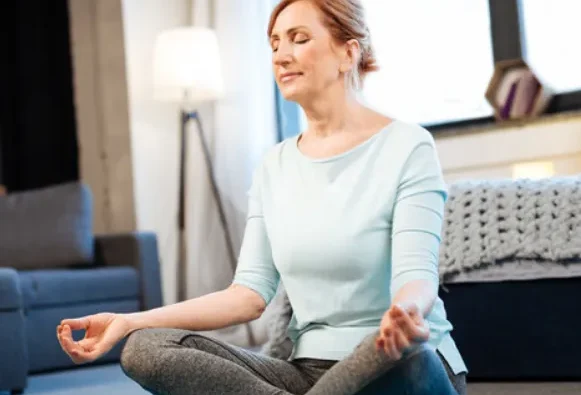
High blood pressure, or hypertension, is often referred to as the “silent killer” because it can develop without showing any clear symptoms. Despite the lack of noticeable signs, uncontrolled hypertension can lead to severe health conditions such as heart disease, stroke, and kidney failure. Fortunately, if caught early, high blood pressure can be effectively managed through lifestyle adjustments and medication. Regularly checking your blood pressure at home is a simple yet powerful way to stay on top of your health.
Why Monitor Blood Pressure at Home?
One of the primary benefits of monitoring your blood pressure at home is that it gives you a clearer picture of your daily patterns. Blood pressure naturally fluctuates throughout the day, with the lowest readings typically occurring during sleep and the highest readings in the late afternoon and evening. Since a single doctor’s visit may only capture your blood pressure at a specific point in time, home monitoring helps you observe how your blood pressure behaves at different times, offering a more comprehensive understanding of your typical range.
With consistent home checks, you can track changes over time and evaluate how effective lifestyle changes and medications are in managing your blood pressure. By working with your healthcare provider, you can fine-tune your approach to treatment and ensure you’re on the right path.
Catch High Blood Pressure Early
Many people with high blood pressure don’t realize they have it, especially in the early stages when symptoms are not yet present. Studies show that millions of individuals remain unaware of their hypertension. Home blood pressure monitoring offers a way to detect high blood pressure early, allowing you to take action before it escalates.
If your readings start to trend upwards, you can make lifestyle changes such as improving your diet, losing weight, or increasing your physical activity before the situation becomes critical. Early intervention can sometimes help you avoid or delay the need for medication, as natural methods can effectively lower blood pressure in many cases.
Save on Healthcare Costs
Uncontrolled hypertension often leads to a cycle of frequent doctor visits, prescriptions, and even hospitalizations if complications like strokes occur. By monitoring your blood pressure at home, you can reduce the need for emergency care and expensive treatments. Regular monitoring helps you identify potential problems early, giving you the chance to address them before more costly interventions are necessary.
Fewer doctor’s appointments and medications can significantly lower healthcare costs in the long run. Preventing serious health events such as heart attacks and strokes can also save you substantial medical expenses.
Improve Decision-Making with Your Doctor
Tracking your blood pressure at home provides valuable information that you can share with your doctor, allowing for better-informed decisions about your treatment plan. With detailed home readings, you can work together with your healthcare provider to tailor your lifestyle habits and medication regimen to suit your needs. This collaborative approach increases the likelihood of success and helps align treatment with your personal preferences and health goals.
Reinforce Healthy Habits
While medication plays an important role in managing high blood pressure, lifestyle changes remain key. Monitoring your blood pressure at home gives you immediate feedback about how your daily habits affect your numbers. For example, you may notice a decrease in blood pressure on days when you engage in stress-reducing activities or consume foods rich in potassium.
Seeing positive results from healthy actions motivates you to stick with them. Your blood pressure readings act as tangible proof that your efforts are making a difference, reinforcing the importance of maintaining a balanced, healthy lifestyle.
Feel Empowered and in Control
Many people feel overwhelmed or powerless after being diagnosed with high blood pressure, especially when faced with consistently high readings. However, home monitoring provides an opportunity to take charge of your health. By tracking your blood pressure regularly, you can see the direct impact of your efforts, whether through lifestyle changes or medication. This sense of control can reduce anxiety and foster a positive mindset toward managing your condition.
Enhance Medication Compliance
For some individuals, the lack of symptoms makes it easy to forget or neglect their prescribed blood pressure medications. However, home blood pressure monitoring helps identify the consequences of missed doses. When you see your numbers rise due to skipped medication, it creates a cause-and-effect relationship that encourages better adherence to your prescribed regimen.
Consistent monitoring also allows you to refine your medication schedule. For example, if your blood pressure tends to dip at night but rise in the morning, adjusting the timing of your medication could help smooth out fluctuations.
Verify Accuracy of Doctor’s Readings
Many people experience temporary spikes in blood pressure when they visit the doctor, a phenomenon known as “white coat syndrome.” This can result in higher-than-usual readings during medical appointments, which may lead to unnecessary adjustments to your treatment plan.
By regularly monitoring your blood pressure at home, you can compare your readings to those taken in the doctor’s office. If your home readings are consistently lower, it may indicate that anxiety at the doctor’s office is causing the increase. Sharing this information with your doctor can help ensure that your treatment plan is based on your actual blood pressure levels rather than temporary spikes caused by stress.
Incorporating home blood pressure monitoring into your daily routine can provide crucial insight into your health, enabling you to take proactive steps to manage your hypertension. By making this simple practice a habit, you’ll be better equipped to make informed decisions, save on healthcare costs, and maintain a healthy lifestyle that supports long-term wellness.












